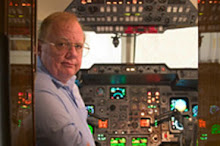A lot of people will choose gold frame aviator sunglasses with a green tint as a fashion statement, but pilots will want to choose their sunglasses based on how well they perform in their work environment. By this I mean, of course, the cockpit!
The problem is that both light we can see and light we can not see have the potential to damage our eyes. Visible light is like the colors of the rainbow, while invisible light is called "ultraviolet light" (uv rays) and while it can't be seen can still wreak havoc with our eyes. Too much of the wrong kind of light can lead to cataracts, macular degeneration, or, sometimes, melanoma around the eyelids.
The problem is that both light we can see and light we can not see have the potential to damage our eyes. Visible light is like the colors of the rainbow, while invisible light is called "ultraviolet light" (uv rays) and while it can't be seen can still wreak havoc with our eyes. Too much of the wrong kind of light can lead to cataracts, macular degeneration, or, sometimes, melanoma around the eyelids.
The More Intense The More Dangerous The Light
It's just common sense that very bright light, like harsh glaring sunlight, has the potential to cause serious injury to our eyes. We all remember our mothers telling us to not look directly at the sun, and in particular to avoid staring at a solar eclipse. The reason is simple: bright intense light is dangerous to our eyes!
Because pilots fly aircraft at very high altitudes where the atmosphere is thinner and the ultraviolet light rays stronger they require - no, they insist - on pilot aviator sunglasses with grey lenses to protect their most important asset for flying an aircraft - their eyes.
Because pilots understand the inherent dangerous of uv rays they demand that their sunglasses not only block 98 to 100% of the harmful uv rays, but they also want "blue light" rays blocked as well. Most low cost sunglasses simply don't provide much, if any, protection. And few provide protection from blue light rays which can be among the most harmful light rays to reach your eyes.
As a pilot myself I highly recommend Randolph Engineering Aviator Sunglasses, and in particular those with the grey tint lenses. They provide incredible protection, and are very well built here in the USA by very skilled craftsmen.
It is now well documented that with the depletion of the ozone layer more of these harmful uv rays pass further into the atmosphere at a greater strength increasing the risk of damage or disease to the eye. Basically there are four kinds of light we need to protect our eyes from:
All light is a form of energy which is very powerful, particularly those light waves which fall in the ultraviolet range between 100 and 400 nanometers. Prolonged exposure to these strong uv rays can lead to skin cancer as well as diseases of the eye like macular degeneration.
This is why for pilots the choice of aviator sunglasses is not about how they look, but rather about how well they protect the pilot's eyes. The next time you get on board an airliner take a look at the pilots as you navigate through the doorway and before you go to your seat - you will almost certainly see a pair of aviator sunglasses hanging down on the pilot's chest!
Because pilots fly aircraft at very high altitudes where the atmosphere is thinner and the ultraviolet light rays stronger they require - no, they insist - on pilot aviator sunglasses with grey lenses to protect their most important asset for flying an aircraft - their eyes.
Pilots Demand Proper Eye Protection
Because pilots understand the inherent dangerous of uv rays they demand that their sunglasses not only block 98 to 100% of the harmful uv rays, but they also want "blue light" rays blocked as well. Most low cost sunglasses simply don't provide much, if any, protection. And few provide protection from blue light rays which can be among the most harmful light rays to reach your eyes.
As a pilot myself I highly recommend Randolph Engineering Aviator Sunglasses, and in particular those with the grey tint lenses. They provide incredible protection, and are very well built here in the USA by very skilled craftsmen.
Scientific Studies Confirm The Dangers Of Harmful UV Radiation
It is now well documented that with the depletion of the ozone layer more of these harmful uv rays pass further into the atmosphere at a greater strength increasing the risk of damage or disease to the eye. Basically there are four kinds of light we need to protect our eyes from:
- UV-A uv rays which are commonly known as the "tanning rays";
- UV-B uv rays which are called the "burning rays";
- UV-C uv rays which are referred to as the "dangerous rays", and;
- Blue light rays in the visible range which are considered quite dangerous
All Light Is A Form Of Energy
All light is a form of energy which is very powerful, particularly those light waves which fall in the ultraviolet range between 100 and 400 nanometers. Prolonged exposure to these strong uv rays can lead to skin cancer as well as diseases of the eye like macular degeneration.
This is why for pilots the choice of aviator sunglasses is not about how they look, but rather about how well they protect the pilot's eyes. The next time you get on board an airliner take a look at the pilots as you navigate through the doorway and before you go to your seat - you will almost certainly see a pair of aviator sunglasses hanging down on the pilot's chest!
